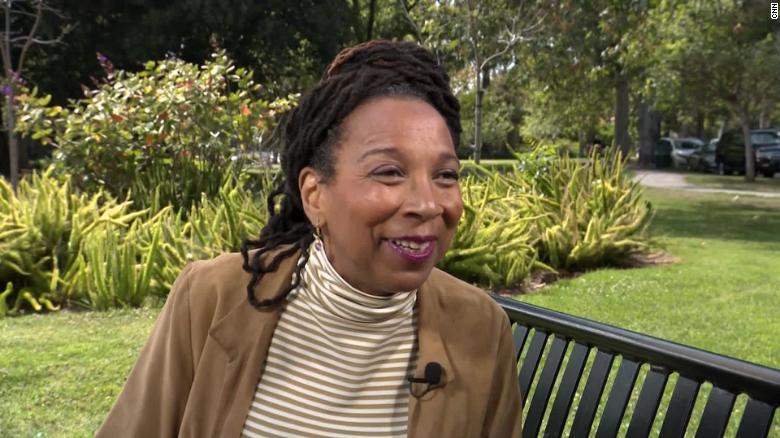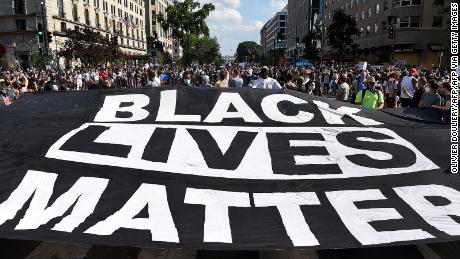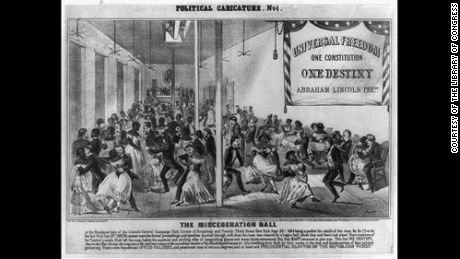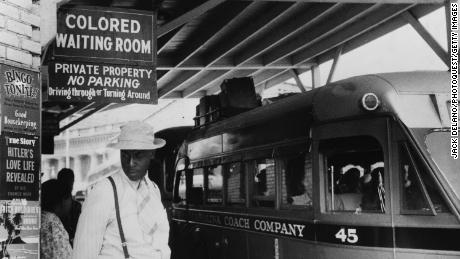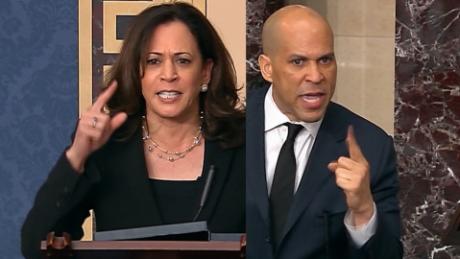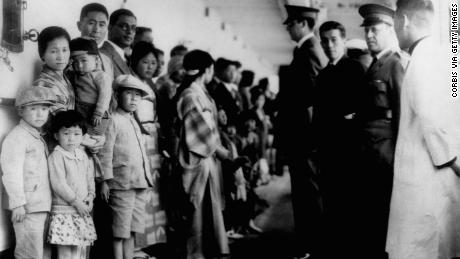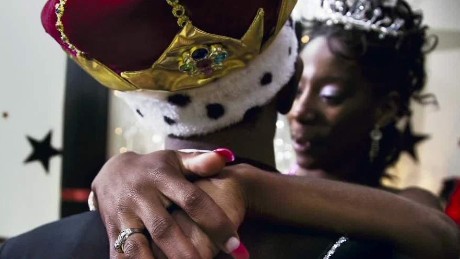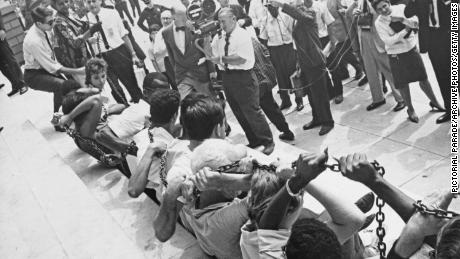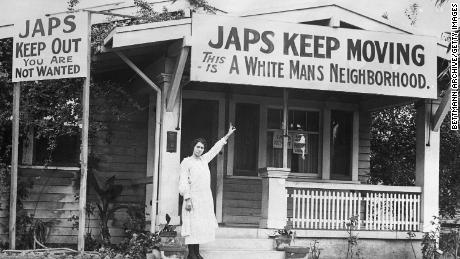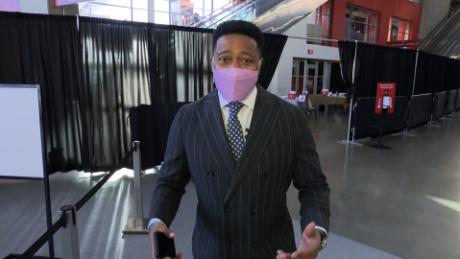Critical race theory is a lens. Here are 11 ways looking through it might refine your understanding of history
Updated 1344 GMT (2144 HKT) May 27, 2021
(CNN)Critical race theory is just that -- a theory -- but the term has been weaponized, with its most extreme critics alleging that merely studying the theory is racist.
Long before the concept dubbed CRT drew controversy, scholars were studying how bigotry and bias infiltrated American institutions and shaped American life. After all, any telling of American history cannot fairly ignore that 177 of the country's 245 years -- 72% of its existence, all but roughly three generations -- played out under slavery or Jim Crow.
As Kimberl├® Crenshaw, a preeminent CRT scholar, put it: The theory is an approach to "grappling with a history of White supremacy that rejects the belief that what's in the past is in the past."
Yes, race relations are better than they were in 1776, or in 1976, but that's not the point. No one who overlooks the role racism has played in the laws and policies of the United States can have a true and full understanding of its history. It's just dishonest.
"Critical race theory's a catchy phrase, but most people talking about it are clueless. To most of us who have been doing this work, it means talking critically about our racist history," said Texas A&M sociology professor Joe Feagin, whose contributions to the scholarship include co-authoring "White Racism: The Basics" and "Living with Racism: The Black Middle-Class Experience."
The driving forces of history -- be they racism, sexism, classism or the like -- need to be discussed in classrooms, where scholars can rigorously suss out fact and fiction. In reconsidering the role of race and racism in American history, that's what students of critical race theory aim to do.
"Kids of color need honest information about society as much as White kids do, so they're prepared to deal with racism," Feagin said. "We are founded on racial oppression. Where I start with this is concrete history. I don't even bring in concepts."
CRT has been around for decades, largely without contention, but given the increasingly divisive nature of the term, let's put it aside and look instead at its underpinnings, the reasons many academics and a growing set of layfolk believe it's needed in today's educational landscape -- not only on college campuses but for younger students, too.
These are established facts of American history, many of them included in "Race, Whiteness, and Education" by scholar Zeus Leonardo, who presented these and other wayposts in an effort to "capture a reliable portrait of White supremacy."
The following list is by no means comprehensive, but it lifts key and oft-overlooked elements of America's story to the fore in an attempt to analyze how they've molded the present and might shape the future.
Land was taken
Before the United States was born, European settlers killed millions of indigenous people across the Americas, but the fighting didn't stop after 1776. The Last Massacre, as the Battle of Kelley Creek in Nevada was known, unfolded in 1911.
Deemed "savages" who must be civilized, Native Americans were left out of the 14th Amendment, which grants birthright citizenship, until 1924. This came after more than three centuries of seizing land from tribes, some of whom had been on the continent since Before Christ. The Indian Removal Act codified the relocation, regularly violent, of people from their homelands. While the Trail of Tears is the most famous of the forced migrations, state-sponsored violence against tribes was profound and persistent.
The so-called "termination policy," another attempt to assimilate Native Americans, wasn't abandoned until 1970. Legislative and judicial disputes over sovereignty continue today.
Recommended reading: California Gov. Peter Burnett's 1851 remarks on a "war of extermination," the Indian Appropriations Act of 1871 and "A Short History of Indian Law in the Supreme Court"
Slavery was the law
To subjugate people to chattel slavery or indentured servitude, the ruling class regards itself as superior to the enslaved.
The Constitution, that great founding document, was the original basis for slavery in the United States, dictating slaves were three-fifths of a person, that escaped slaves must be returned to their owners and forbidding any prohibition on slavery until 1808 (all of which, while long invalidated, remain in the Constitution.)
Add to that a litany of federal court rulings upholding slavery. The Slave Trade Act of 1794 banned participation in the international trade in humans, but slavery was not abolished until the 13th Amendment was passed in 1865. The amendment carried a caveat -- "except as a punishment for a crime" -- that resonates today in a country where Black and Hispanic inmates make up more than half of the populations in US prisons, and where incarcerated people are often required to perform labor for little or no compensation.
Recommended reading: "Slavery in the United States: Persons or Property?", "The Fugitive Slave Act of 1850: Symbolic Gesture or Rational Guarantee?" and "We Can't Be Free Until We Fully Abolish Slavery"
Interracial marriage was banned
There's little more supremacist than outlawing the "mixing of races" to maintain the "purity" of one race. Before the United States was founded, Maryland not only banned unions between White and Black people, the colony ordered servitude for any woman engaged in such activity, as well as children born of such unions.
Several states enacted anti-miscegenation laws after 1776 and reenacted them after Reconstruction. There were at least three attempts to add a miscegenation ban to the US Constitution, the last introduced by Sen. Coleman Blease in 1928.
By the time the Supreme Court's 1967 Loving v. Virginia ruling authorized interracial marriages, most states had nixed the laws. A few (mostly Southern) holdouts remained with no legal backing. South Carolina did not officially repeal the law from its constitution until 1998. Alabama overturned its interracial marriage ban in 2000, and state lawmakers will meet next year to, possibly, remove racist language on that subject and others from its constitution.
Recommended reading: Pace v. Alabama, a 1986 report on the "long, cruel history" of America's "last taboo" and scholar Allison Skinner's 2016 report on the "hidden bias against interracial couples"
Voting was restricted
After fighting a war for their tenuous freedom, African American men became citizens with the 14th Amendment, but they were routinely turned away from polls, prompting Congress to enact the 15th Amendment, allowing them to vote.
It had limited effect as states employed literacy tests, "good character" vouchers, poll taxes and more odious tactics to keep Black men out of ballot boxes. While women were granted the right to vote with the 19th Amendment in 1920, many Black women didn't see that right realized until the Voting Rights Act of 1965 banned various forms of disenfranchisement.
The Supreme Court pulled teeth from the act in 2013. Congress has yet to decide whether to enact new federal safeguards for voters. After last year's presidential election saw the highest turnout in history, lawmakers in several states have aimed to restrict voting.
Recommended reading: The fight to vote in one of Georgia's Blackest counties, "What a Colored Man Should Do to Vote" and Shelby County v. Holder
Jim Crow was accepted
Voting rights, citizenship and property ownership for African Americans came during post-war Reconstruction, which later saw Black Southerners ascend to political power -- but it didn't last. Twelve years after the Civil War, Jim Crow -- an evolution of slave codes and Black codes -- took hold, ushering in a series of laws and societal norms that would prove ruinous to the newly freed Americans.
As clergy, journalists, politicians and scientists reinforced the abhorrent notions of White supremacy, Jim Crow laws provided the backbone of America's racial caste system, which the Supreme Court upheld in 1896. It would remain the law of the land for about seven more decades.
States enacted segregation laws, separating public services and spaces along racial lines or barring African Americans outright, while the Jim Crow era's etiquette rules governed everything from how Black people showed affection to each other to how they addressed White people. The price for defiance? Usually beatings or lynchings.
Recommended reading: "Plessy v. Ferguson: Who Was Plessy?", "Jim Crow Guide: The Way It Was" and "Daily Life in the Jim Crow South, 1900-1945"
Lynching was tolerated
Laws prohibited the arbitrary or extrajudicial killing of Black people, but more important than what was codified during Jim Crow is what was not codified. When an anti-lynching bill was introduced in Congress in 1918, it took years to pass the House before hitting a Senate roadblock.
Southern lawmakers baselessly claimed Black men were lynched for raping White women -- a phantasm that still haunts Black men -- and asserted laws governing lynchings were best left to the states. Researchers have found evidence of thousands of lynchings -- and they're sure they're undercounting.
While many associate lynchings with hangings, historians say numerous mass killings fit the definition -- from the political violence in New Orleans in 1866, Colfax, Louisiana, in 1873, and Wilmington, North Carolina, in 1898, to massacres in Atlanta (1906), Springfield, Illinois, (1908) East St. Louis, Illinois, (1917) Tulsa, Oklahoma, (1921) and Rosewood, Florida (1923), to name a few.
Congress has never passed an anti-lynching law. A bill named for Emmett Till passed the House last year by a 410-4 vote, but was held up in the Senate by a lone lawmaker who called it overly broad.
Recommended reading: United States v. Cruikshank, "The Charleston Massacre and the Rape Myth of Reconstruction" and CNN's report on America's long legacy of lynching
Immigration was biased
White supremacy was clearly at the heart of early immigration laws. The 1790 Naturalization Act said only "a free white person" need apply. In the mid- to late 1800s, as German, Irish and Chinese immigrants began to arrive on American shores, Asian immigrants were singled out in the Page Act of 1875 and later the Chinese Exclusion Act of 1882. Immigration officials were particularly hard on Asian women, who were maligned as disease-ridden and promiscuous and subjected to humiliating interrogations and physical exams.
Beginning in 1929, California and other states deported about 2 million people of Mexican ancestry, more than half of whom had been born in the United States (about 400,000 in California alone were citizens or legal residents). In the 1950s, Operation Wetback (yes, the actual name) resulted in hundreds of thousands of deportations to Mexico, though the exact number is disputed.
While immigration policies are fairer today, at least one successful presidential candidate resurrected specters of America's dark past, praising Operation Wetback, attacking Dreamers, using bigoted terms for Covid-19 and allegedly bashing immigrants from "s**thole countries, including Haiti and some African nations.
Recommended reading: "History of Angel Island Immigration Station," a report on the lost history of Mexican "repatriation" and "The Chinese Must Go!"
Education was curtailed
Slavery brought with it anti-literacy laws, which states continued to pass and enforce until the mid-1800s. The aversion to educating African Americans wasn't limited to the South. See the stories of a rejected proposal for a college in New Haven, Connecticut, a mob's destruction of the Noyes Academy in Canaan, New Hampshire, or the attack on a school for "young ladies of color" in Canterbury, Connecticut.
Post-slavery, segregation ensured Black children were sent to their own schools, and while the Supreme Court's Plessy v. Ferguson decision demanded "separate but equal" facilities, there was nothing equal about the education Black kids received. The high court recognized as much in its landmark Brown v. Board of Education ruling.
Still, segregated school systems remain a reality. Rights groups have pointed out inequality throughout the US education system, including in school funding, "tracking" practices, redistricting, school discipline (and the "school-to-prison pipeline"), high-stakes testing and how African American boys are perceived, among other phenomena. The uneven treatment can continue in college and after.
Recommended reading: "The Essence of Innocence: Consequences of Dehumanizing Black Children," the US Department of Education's 2014 report on "troubling racial disparities" in public schools and the personal narrative of a woman jailed in 1854 in Virginia for teaching Black children to read
Good jobs were elusive
Slavery and Jim Crow funneled workers of color into low-wage vocations, such as farm work, housecleaning and driving wagons -- and the percent of people of color working in similar occupations today remains skewed.
Black codes and their subsequent Jim Crow manifestations criminalized elements of African American behavior -- whether promoting "social equality" in Mississippi or waiting in the wrong room for a train in Kentucky -- reopening them to slavery via incarceration, a la the 13th Amendment.
Anti-enticement measures tilted the jobs landscape by forbidding employers from offering Black workers higher wages than they were already receiving. Debt peonage -- in which an employer compels someone to work to cover a debt -- was outlawed in 1867, but through transportation and living expenses, merchant credits and sharecropping loans, scurrilous White employers could force minorities to work until the system was eradicated in the 1940s.
The Fair Labor Standards Act and Wagner Act improved working conditions and collective bargaining, respectively, but they also excluded many jobs filled by people of color.
Data on 2019 household income showed that while wages have risen since 2000, Asian and White households fare the best, with the median White household bringing in $20,000 a year more than a median Hispanic household and $30,000 more than a Black one. Meanwhile, since 1980, funding and staffing for the Equal Employment Opportunity Commission has been on the decline.
Recommended reading: "The Impact of Structural Racism in Employment and Wages on Minority Women's Health," economist William Spriggs' 2019 testimony to a House committee and a report on how Black workers face two lethal pre-existing conditions for Covid-19: racism and economic inequality
Housing was exclusionary
Following the broken promise of "40 Acres and a Mule," Jim Crow stoked the Great Migration of millions of Southern Black people to the North and West -- which, in turn, spurred exclusionary zoning. In 1910, Baltimore became the first city to ban African Americans from living in White neighborhoods. The practice spread west to Oklahoma City and north to Colwyn, Pennsylvania, by 1916.
After the Supreme Court ruled such discrimination unconstitutional in 1917's Buchanan v. Warley decision, cities devoted significant real estate solely to detached single-family housing -- which, without mentioning race, shut out most minorities. Racial covenants in property deeds also precluded non-White buyers.
The Federal Housing Administration, created in 1934 to boost home ownership, exacerbated matters. Worried that African American homeowners would bring down White property values, the FHA refused to insure Black homes in White neighborhoods, resulting in redlining -- whereby African Americans were steered to "hazardous" inner cities and Whites to "desirable" suburbia. Government underwriters and 1944's GI Bill continued the pattern of prejudice, while the American Housing Act of 1949 and Federal-Aid Highway Act of 1956 displaced tens of thousands of minorities. Discriminatory lending and racial covenants weren't outlawed until 1968.
After the subprime lending crisis hit in 2007, about 2.5 million Americans lost their homes by 2009, with Black and Latino homeowners' foreclosure rates among recent borrowers more than doubling that of their White counterparts. The return of Whites to cities in the last decade further displaced minorities. In 2019, Black home ownership hit its lowest rate since 1970, and a recent study shows Hispanics and African Americans must earn more than Whites to live in affluent neighborhoods.
Recommended reading: Report on cities questioning single-family zoning, the Village of Euclid, Ohio v. Ambler Realty Co. and "The controversial history of Levittown, America's first suburb"
Health care was inferior
In the country's early years, the medical profession believed it was OK to experiment on minorities -- often without consent -- and deliver subpar, if any, medical treatment, but the behavior continued long after that.
The father of gynecology experimented on enslaved women without anesthesia in the mid-1800s; loose laws in the early 1900s allowed forced sterilization of countless minorities and others, into the 1970s; the US government-led Tuskegee Syphilis Experiment, which let 399 Black men go untreated for the disease, ran from 1932 to 1972; Ebb Cade, a Black man, was unknowingly the first subject in the Manhattan Project's human radiation experiments; and Henrietta Lacks' cells have led to groundbreaking medical breakthroughs, but the 31-year-old Black woman died of cancer in 1951 with no knowledge her tissue had been taken without her consent.
Black Americans' trust in the medical profession remains battered. Recent studies show bias, while better, remains problematic -- with pain management and health care algorithms offering just two examples. African Americans are also disproportionately enrolled in studies that don't require informed consent and are hit much harder when it comes to a range of medical issues, from maternal mortality to Covid-19.
A dearth of Black doctors, of course, does nothing to rectify the issues.
Recommended reading: "Health Inequality Actually Is a 'Black and White Issue,' Research Says," the debate over former Surgeon General Thomas Parran's legacy and "A medical hell recounted by its victims"
